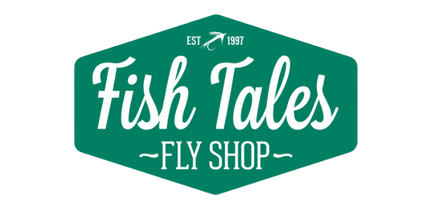2024 Argentina with SET Fly Fishing - Part 1
Feb 18, 2025
We’ve had time to digest our South American travels from the past couple months and are ready to share our trip reports.
First is Argentina with Set FlyFishing. This was a do-over trip for me as I ended up sick on the 2023 trip and couldn’t fish much. Fishing on that trip was challenging due to extremely low water. We fished Itati and Jetu’s Ysoro Marsh (the Iberia Marsh was dry and on fire and thus closed!). Fish were caught, but the area was stressed. That said, SET FlyFishing did such an excellent job we wanted to return.
Fast Forward to November 2024 and we were back for another crack at golden dorado.
We left Calgary on November 27th and traveled via Houston to Buenos Aires on Thursday November 28th - American Thanksgiving. Luckily we beat the “Thanksgiving rush” so we encountered no problems with flights or luggage!
We were a small group of anglers (Nancy, Rod and I) due to a last minute achilles blow-out for one unlucky angler. We were picked up by a SET representative and taken to our Air BnB in the Recoleta area. Recoleta is a happening area especially when there is a major “football” match happening! The street outside our building was FULL of singing, partying fans who, in the end, turned out to be very “well behaved” just loud. Loud enough Rod changed his hotel reservation to a different area for the return trip as he was directly above the party scene! It was fun to see people having a great time supporting their teams.
The Recoleta area of Buenos Aires has lots going on. We had a full day on Friday with time to do the “hop on hop off” bus tour which provided an excellent overview. Buenos Aires has an impressive number of green spaces. We returned to the Museo Nacional de Bellas Artes to see it’s incredible art collection. The wall-sized tapestries from the 1660’s still blow me away. And seeing famous artist’s work without any barriers is quite something even for a “non” arty guy like myself!

On Friday night we enjoyed dinner with Phil Rowley and his group who were on their way to dorado-fish on the lower Parana and Jurassic Lake. We had an excellent meal at Fervor - a great way to start the culinary part of the trip!
Saturday morning we were picked up for the private charter to the Corrientes area. We met the rest of the group who were headed to the marsh with us before they went to Itati on the Upper Parana. The other clients were long-time fly fishing industry folks; Ben & Chuck Furimsky, and Rob Parkins all from the Fly Fishing Show, and Pierce from Wet Net Outfitters. These were great guys to share some time with.
During the flight north we could tell there had been much more water and everything that had looked dry and bleak in 2023 looked lush.

Our first SET destination was La Alondra the lodge at the starting point to time on the Iberia Marsh. It takes a couple of hours to drive there from the small airport. It was good to see how much healthier everything - horses, cattle, goats, sheep - looked compared to our previous trip. We were at the lodge for one night before heading into the marsh. The house/lodge has a lot of history and is a comfortable place to stay with excellent meals.
Saturday afternoon, after getting settled into our rooms and getting rods ready (with the help of SET’s excellent guide crew) for Dorado fishing, we went on a horse back ride IN the marsh. I’m not much of a horse guy - proved again with my horse NOT stopping when the horse in front of me stopped for a dump and my knee connected with that horse’s a$$ mid-dump - but the couple of hours riding into the marsh was totally worth it. Pants wash easily. The traditional “Gaucho culture” in this area is very important. Our cultural experience continued that evening with a traditional music and dance performance.


Early Sunday morning we headed to the marsh launch area in trucks. Our dry bags - on loan from the outfitter - were packed for the two-night marsh excursion, fishing rods were set up, and we were ready to see what this area is all about.
We asked questions about the fish, wildlife, birds, etc. “Will we see many Capybara?” “Oh most likely” was the guide’s casual answer. Once we entered the national park and were headed to the dock we saw our first group of these unusual animals. A mama and babies were casually laying beside the road. Score! Great sighting! The guides kind of chuckled at us “gringos” excited by this first sighting.
We got into the boats for a ride into the marsh. Our group of three headed to the central portion of the marsh and the others headed to the southern-most area.
 The ride was spectacular, zipping though the channels and lagoons, birds everywhere, and of course we now understand the guides casualness with the Capybara’s. They were everywhere! They are kind of like giant gophers playing around and swimming. We also saw some beautiful native marsh deer that have adapted to the environment. I am sure the wildlife is much happier to have their watery home back than when it was on fire! Iberia is 100% reliant on rain and is classified as the second largest wetland in the world. It’s a special place to be sure.
The ride was spectacular, zipping though the channels and lagoons, birds everywhere, and of course we now understand the guides casualness with the Capybara’s. They were everywhere! They are kind of like giant gophers playing around and swimming. We also saw some beautiful native marsh deer that have adapted to the environment. I am sure the wildlife is much happier to have their watery home back than when it was on fire! Iberia is 100% reliant on rain and is classified as the second largest wetland in the world. It’s a special place to be sure.
We arrived at Rugua our house in the marsh, unloaded our bags, and headed fishing. I fished with Rod as this was his first time and Nancy fished on her own. This area of the marsh is filled with small channels and bays where we tossed streamers to the bank and waits for the explosion that is the classic way dorado “kill” flies! The water is somewhat clear so we get to watch some of the strikes. Dorado are an impressive fish even at 2-5 pounds which is typical in this area of the marsh. They are true jumpers and spend almost as much time out of the water as in it when hooked!
I am a complete sucker for a popper and can attest that dorado definitely smash poppers! Occasionally I had to warn Rod to watch his back cast for capybara and caiman as he could’ve definitely hooked one by mistake!
If you do a dorado trip be prepared to go through a lot of flies as the dorado and piraña destroy even the best-tied flies. Luckily the guides have well-stocked boxes that they happily share.


We fished the Rugua area for the remainder of day and had a great time. When we returned to the lodge we all agreed that it was like “fishing through a National Geographic film”! I don’t think you could look anywhere without seeing birds. That night after a powerful thunder storm we were very happy be in the house at Rugua instead of the tents (which the other crew was in) which we headed to for our second night in the marsh.
The next morning we continued in the Rugua area and enjoyed the fishing, the birds, caiman, and even a few more marsh deer. I was seriously impressed with the swimming abilities of the Capybara. We continued to feel like we were fishing through a national geographic film. Nancy landed the largest dorado in the 8-9 pound range which is a solid fish for the marsh. A great experience.
Read Part 2 | Read Part 3 | 2026 Dorado Hosted Trip Details


